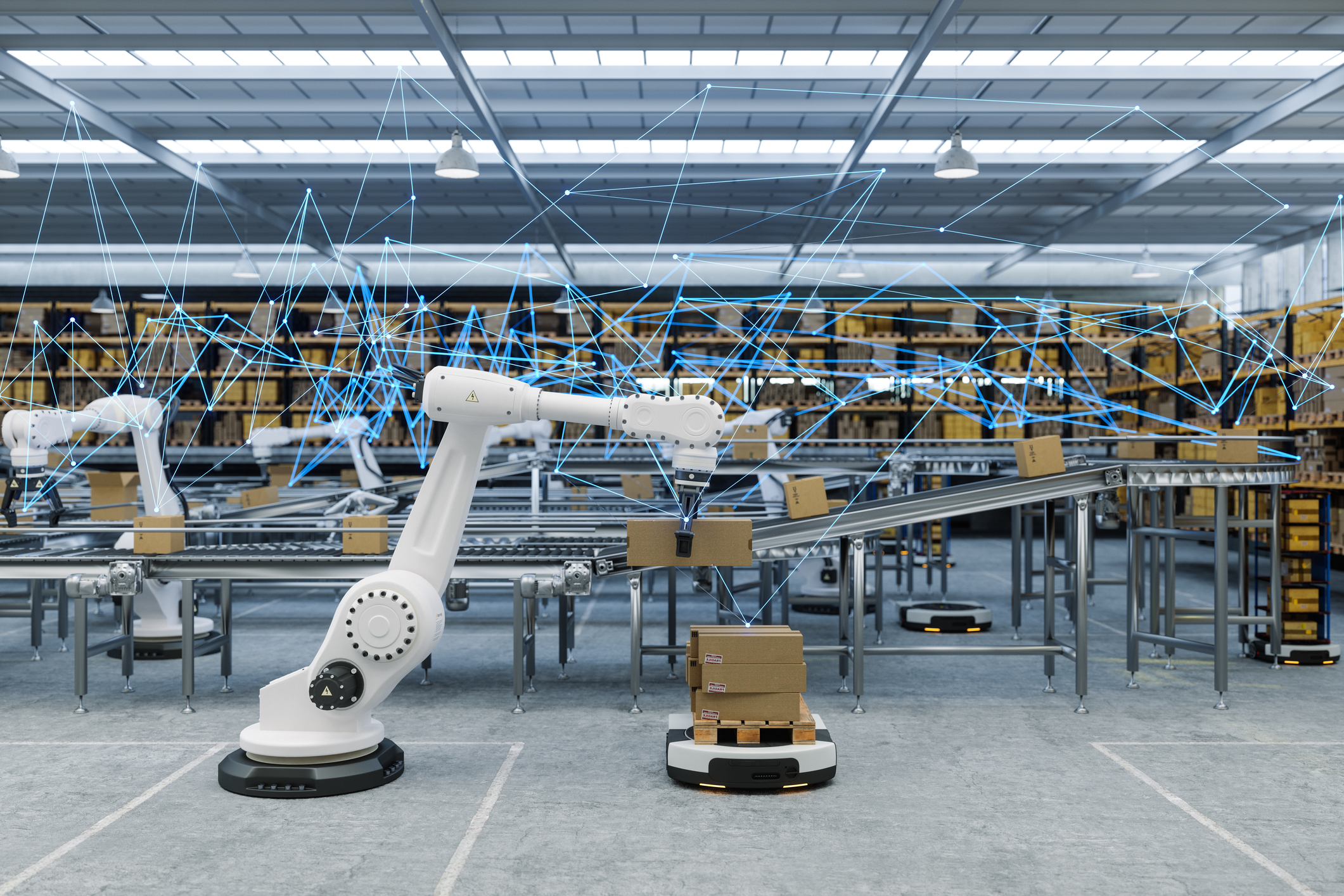How MES is Shaping the Future of Manufacturing and Boosting Production Efficiency
What is a Manufacturing Execution System (MES)?
A manufacturing execution system (MES) is a comprehensive, dynamic software system that monitors, tracks, documents, and controls the process of manufacturing goods—from raw materials to finished products. An MES provides a functional layer between enterprise resource planning (ERP) and process control systems, giving decision-makers the data they need to make their production area more efficient.
Regardless of the size of an operation, an MES can contribute to overall productivity and profitability by controlling information about the manufacturing process.
The industries that particularly benefit from an MES are those that are highly regulated, such as pharmaceuticals, medicines, biotechnology, aviation and food and beverage production. Companies in these sectors must follow strict regulations to ensure compliance with traceability to protect public health and safety and be in a position to recall products easily if necessary. These industries are also highly competitive. The need to innovate, automate and contain costs calls for optimum performance across the manufacturing value chain.
Features and Functions of an MES
In 1996 the Manufacturing Enterprise Solutions Association, or MESA, defined 11 core features and functions of an MES with relationships to external enterprise systems and functional areas. The model depicts what, at the time, was the MESA view of the functions within a manufacturing execution system, including scheduling and sequencing, maintenance, and quality.
These have evolved over the years and its latest incarnation, Smart Manufacturing (2022), focuses on Lifecycles (Production, Production Asset, Product, Supply Chain, Workforce and Order-to-Cash); Cross-Lifecycle Threads (Quality, Compliance, Sustainability, Analytics, Security, Digital Twin / Thread and Modeling / Simulation); and Enabling Technologies (IIoT, Big Data AI / ML, VR / AR Edge to Cloud, Blockchain, Additive Robotics, Wireless). This latest model is intended to evolve as new technologies and capabilities emerge.
Benefits of Implementing MES
Manufacturing execution systems track vast amounts of data and provide real-time insights that can increase production efficiency and save costs. Here are eight important benefits that arise from this:
- Improved production efficiency: MES optimizes workflows, reduces downtime, and ensures smooth coordination between machines, materials, and labor.
- Product quality and consistency: Because quality control information is communicated in real time, an MES enables companies to stop production immediately when problems are detected. This reduces waste, scrap, overruns and rework.
- Increased uptime: MES monitors machine performance and preventive maintenance schedules, reducing unplanned downtime.
- Reduced inventory: A manufacturing execution system updates inventory records with new production so that purchasing, shipping, and planning departments always know exactly what material is available. This saves manufacturing, transportation, storage, and inventory monitoring costs.
- Better communication & decision making: The elimination of paperwork means that there are fewer opportunities for human error. It also means that data collected from the shop floor is immediately available to decision-makers across all integrated systems.
- Better compliance and traceability: MES ensures adherence to regulatory requirements by maintaining detailed records of production history, including raw materials, processes, and personnel.
- Seamless integration with ERP and supply chain systems: MES synchronizes manufacturing operations with business planning, inventory management, and customer demand.
- Faster time-to-market: By streamlining processes and improving production agility, MES helps manufacturers respond quickly to changing customer demands.
Technology and Integration in MES
Modern MES must be considered in relation to various enabling technologies. IIoT, artificial intelligence and blockchain being some of the most important. When MES is integrated with IIoT, AI, and Blockchain, manufacturers can realize a smart factory ecosystem, in which data from connected devices (IIoT) flows directly into MES, allowing for real-time monitoring and faster responses to production needs. AI algorithms interpret this data to make smart, predictive decisions that can automatically adjust the production process in real time. Blockchain ensures that this entire process is recorded securely, transparently, and immutably, which is especially important for industries with stringent quality and regulatory requirements.
These integrations bring a range of benefits including improved quality control, better decision-making, greater supply chain resilience, increased efficiency and reduced downtime.
In most modern manufacturing environments, MES is closely integrated with ERP systems. Together, MES and ERP provide operational clarity that neither system can provide alone.
ERP focuses on creating and managing work schedules, including production, material usage, delivery and shipment, and gathering information about the business. MES, on the other hand, focuses on managing and monitoring manufacturing operations and reporting production line activities in real time.
Together, an ERP and an MES create an integrated network that provides a holistic view of finance, procurement, supply chain management, manufacturing logistics etc. Combining this information increases agility and provides robust data that improves forecasts for everything from sales to production management. An MES integrates ERP data with information from the factory floor to determine how to make those products with less waste and increased profit margins.
Selecting the Right MES for Your Business
So, what are the criteria for selecting an MES? First, it must offer all the core features and functions of a modern system that’s future-ready for smart manufacturing. But it should also be customizable to your specific needs and priorities. It should comply with regulations (ISO 9001 for manufacturing, but also more industry-specific standards such as FDA 21 CFR Part 11 for pharmaceuticals). It should integrate seamlessly with the technologies noted above as well as existing manufacturing equipment and automation technologies such as SCADA, PLCs, and CNC systems. Ease of use is of course a major consideration: do you need mobile or remote access? Do you need role-based dashboards for ease of control?
In addition, find out if the vendor has experience in your sector of manufacturing, and can provide case studies and references to prove it. Do they have a good track record on cybersecurity, and do they have the relevant certifications?
Your budget obviously plays a big role in your considerations too. But investigate the total cost of ownership (TCO) rather than price alone— consider licensing, implementation, maintenance, and training costs. Bear in mind that different vendors have different pricing models, which are not so easy to compare. When you have reduced the number candidates to a shortlist, it is best to use advanced sourcing software to analyze their bids before making a final decision.
Future Trends in MES
Industry 4.0, smart manufacturing, and automation are transforming MES into modular, service-oriented, and highly networked systems. Advances in big data, cloud computing, and edge computing are enabling real-time decision-making, while AI-driven machine learning enhances efficiency, customization, and responsiveness to demand. As MES integrates with IIoT and ensures greater cybersecurity and interoperability, manufacturers will achieve lower costs, higher quality, and the agility required for mass customization.




